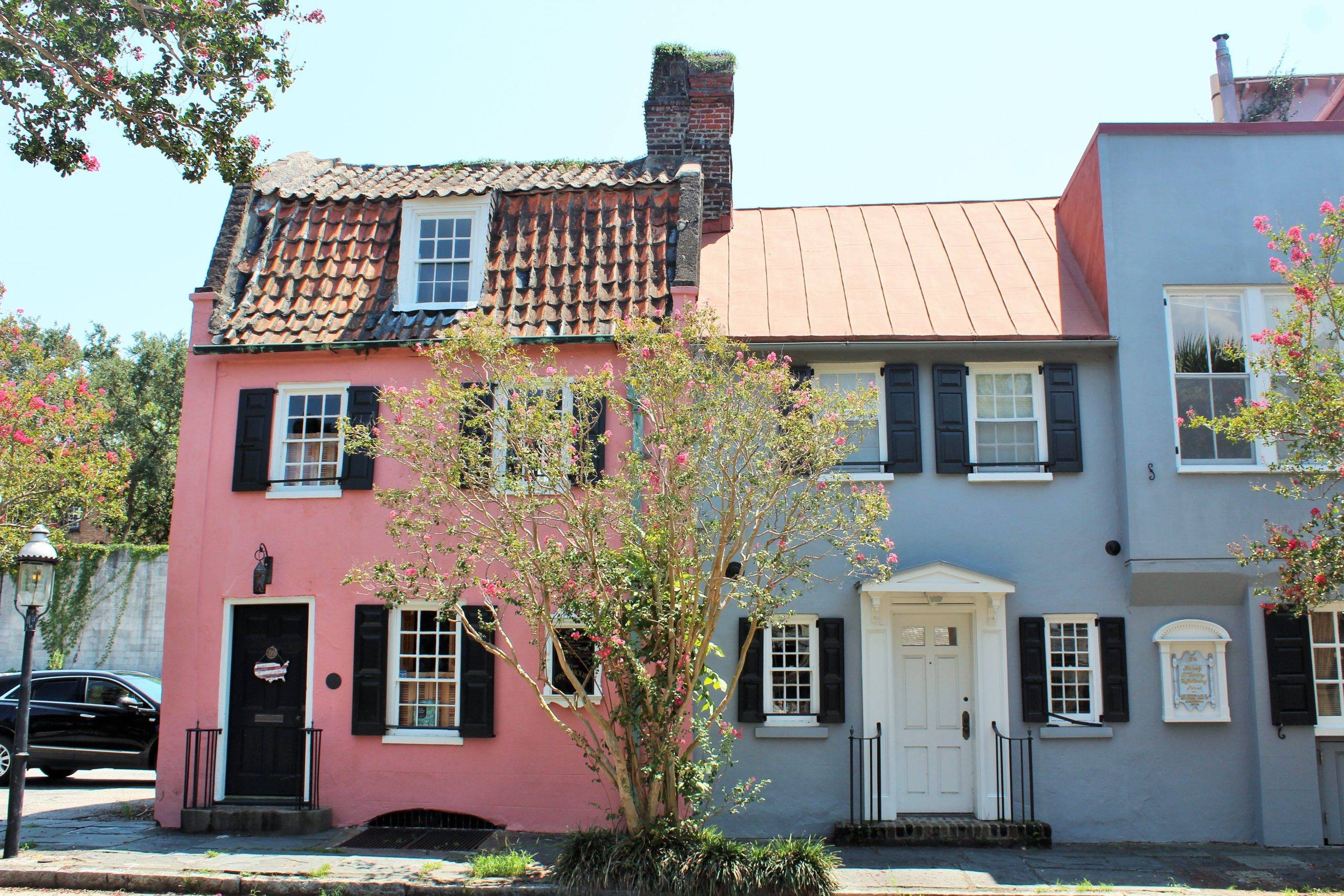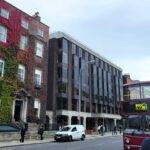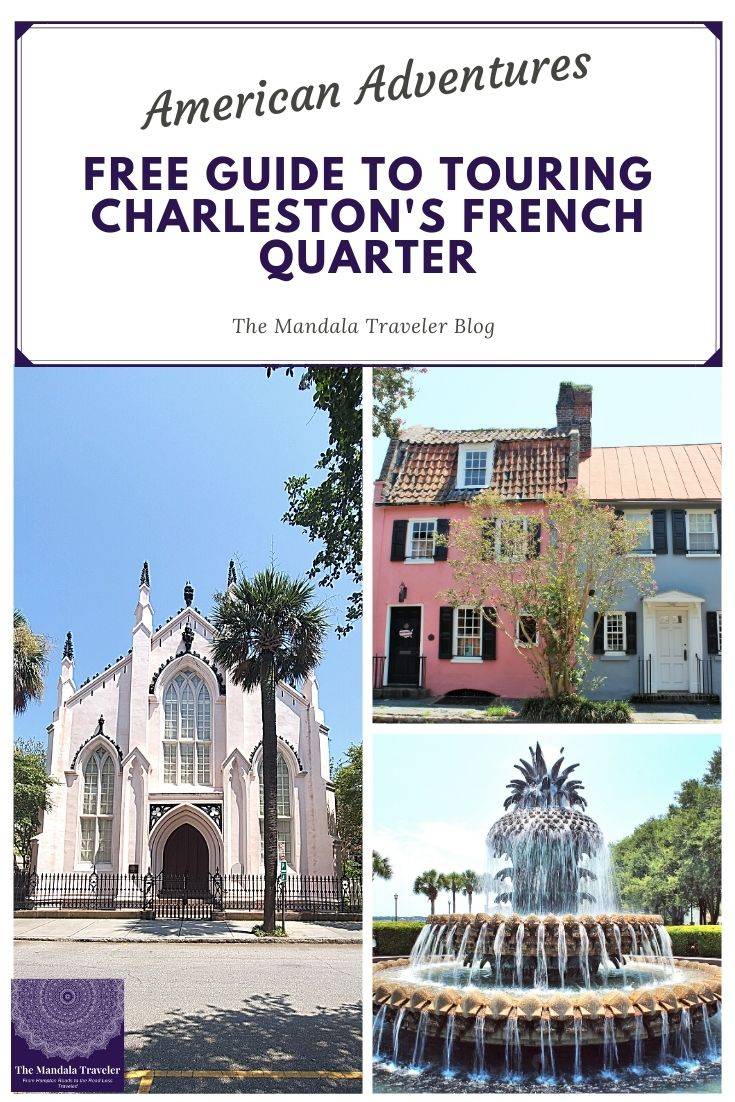I can’t believe it’s already been a month since we visited Charleston, SC, and finally crossed so many amazing things off my list! Visiting Charleston has been on my bucket list for years now, and it was incredible to finally see this beautiful historic city and soak in all its unique sights and sounds. We covered so much while we were there, so I’ll actually be breaking down our adventure into a couple of posts to make it more manageable for you (and me!). This week, I want to tell you all about Charleston’s gorgeous French Quarter!
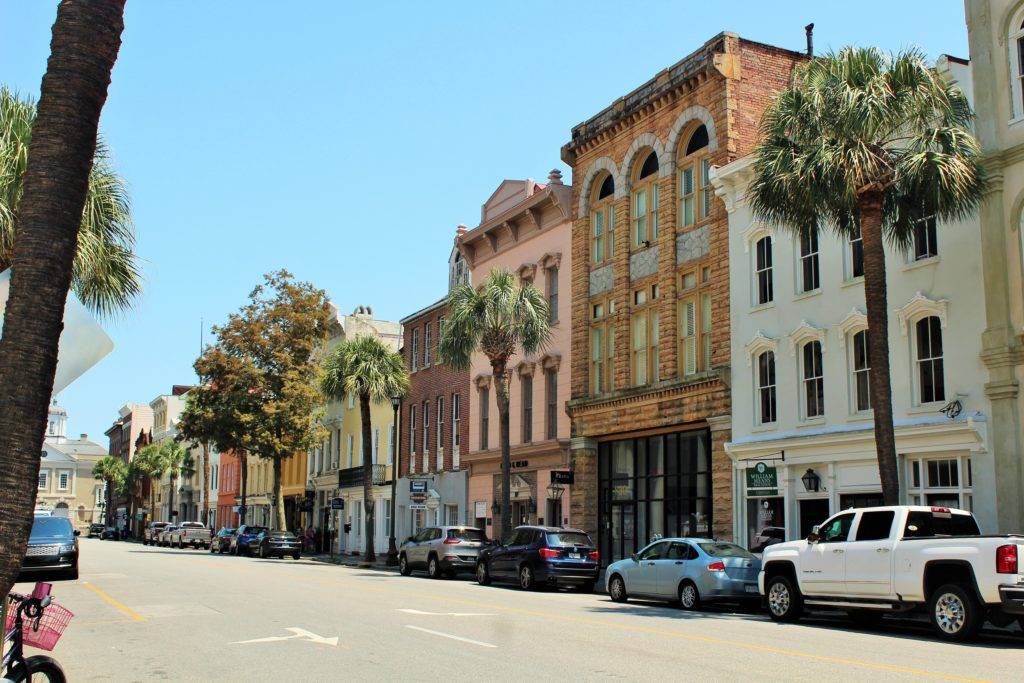
Quite frankly, this colorful nook of Charleston is one of the main reasons that we decided to visit now. Like our trip to Helen, GA, I was hoping that Charleston would offer some of that European flair that we didn’t get to enjoy this summer.
While we certainly weren’t surrounded by crepes and French-speaking natives, these neighborhoods had such wonderful character that reminded me a little of New Orleans. You’ll find plenty of architectural beauty in this neighborhood, along with a rich history. It’s an Americanized version for sure, but the quiet streets and ornate buildings make it feel like you’ve stepped into a time capsule.
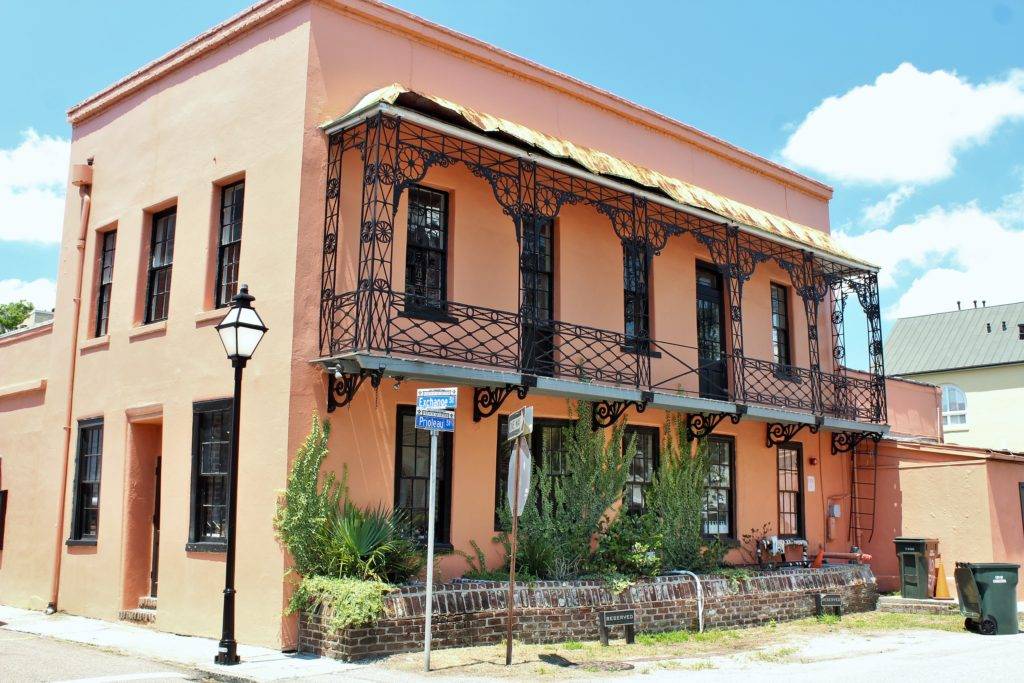
Where did Charleston’s French Quarter Come From?
While the Carolinas have a long and complicated history with France, this unique neighborhood didn’t originate with a French settlement.
Charleston was founded in 1670 by a group of English settlers. About ten years after, a group of 45 Huguenots sailed from France to Charleston to escape religious persecution, and their numbers quickly grew.
Several of the notable neighborhood sites link directly to this group, such as the pink Huguenot Church. However, the majority of Charleston’s French Quarter buildings relate back to wealthy merchants who came to Charleston and built fancy warehouses and homes in the style of their homeland.
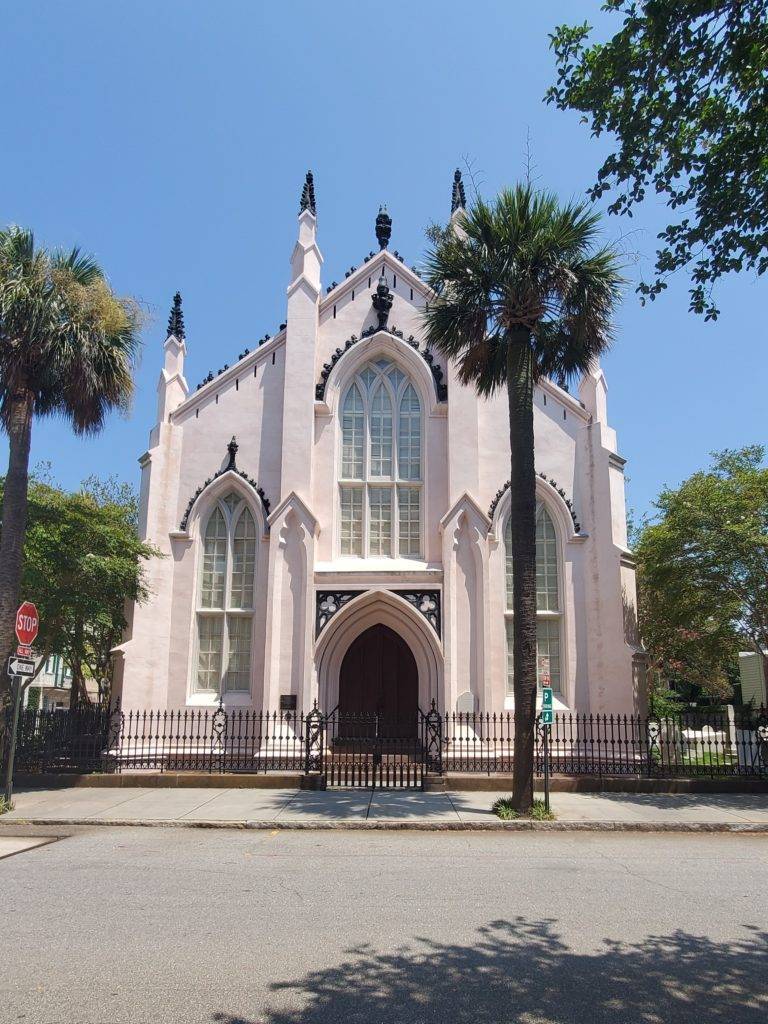
Most of what is now the French Quarter is built within the area that was initially the walled colonial city of Charles Town.
Hundreds of years later, these ornate buildings still stand, adding so much charm to this already beautiful ocean town.
Free Guide to Touring Charleston’s French Quarter
I absolutely love walking tours, and this one has definitely made it to the top of my favorites list. While you can certainly pay someone to show you around Charleston’s different areas, we had no trouble exploring the beauty of the French Quarter on our own. And you can, too!
Feel free to download or pin this guide PDF to use for any future trips you take to Charleston! We mapped out our route to maximize time and minimize walking distance, which I’m sure you’ll appreciate as well. It creates a big loop that starts and ends by the waterfront, where there’s decent parking.

And here is the full list of must-see buildings in the French Quarter!
Joe Riley Waterfront Park
1 Vendue Lane
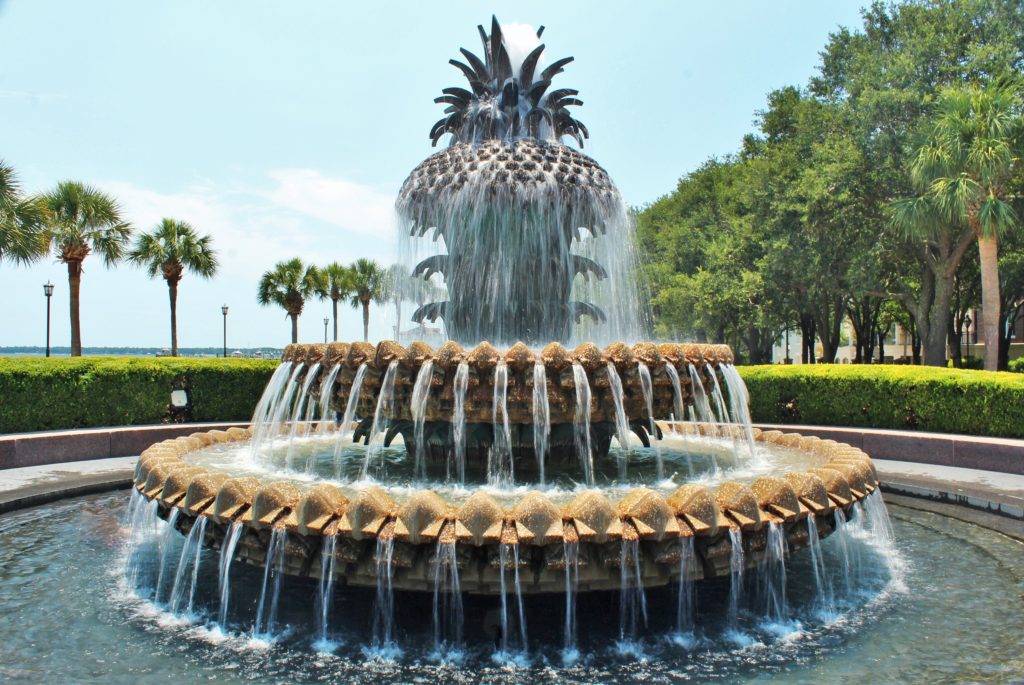
The Joe Riley Waterfront Park is a Charleston icon, with 12 acres of gorgeous landscaping, benches, fountains, and water views. This particular park is home to the famous Pineapple Fountain, which actually doubles as a splash pad! Be sure to spend some time wandering the park and connected docks to see both the water views and the lovely homes lining the park.
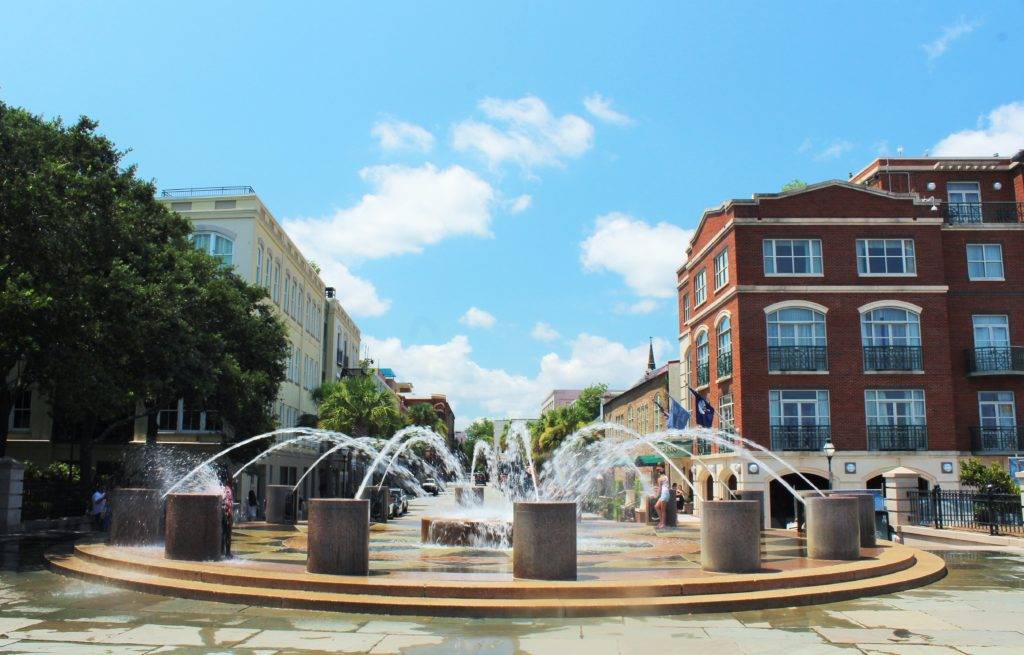
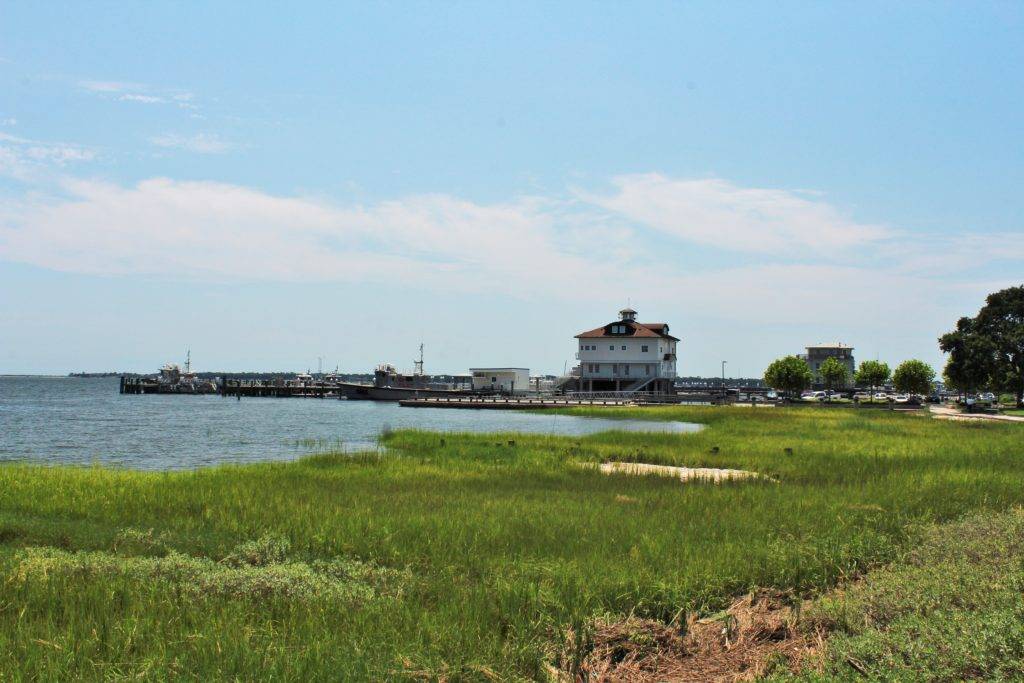
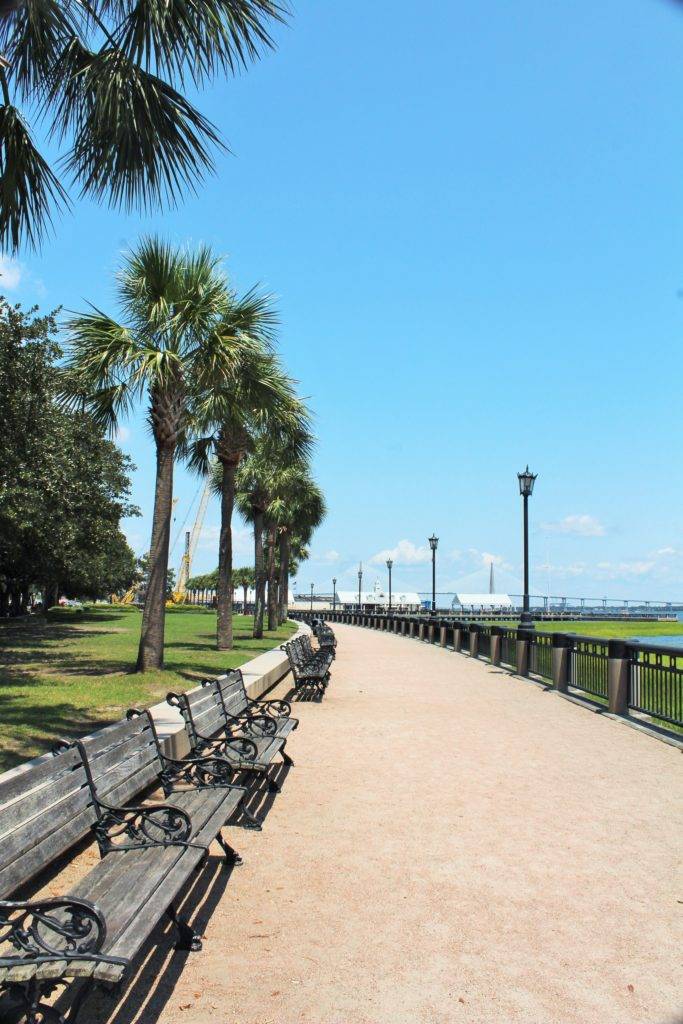
Directions: Head West on Queen Street, then turn right down E Bay Street to the U.S. Custom House.
U.S. Custom House
200 East Bay Street
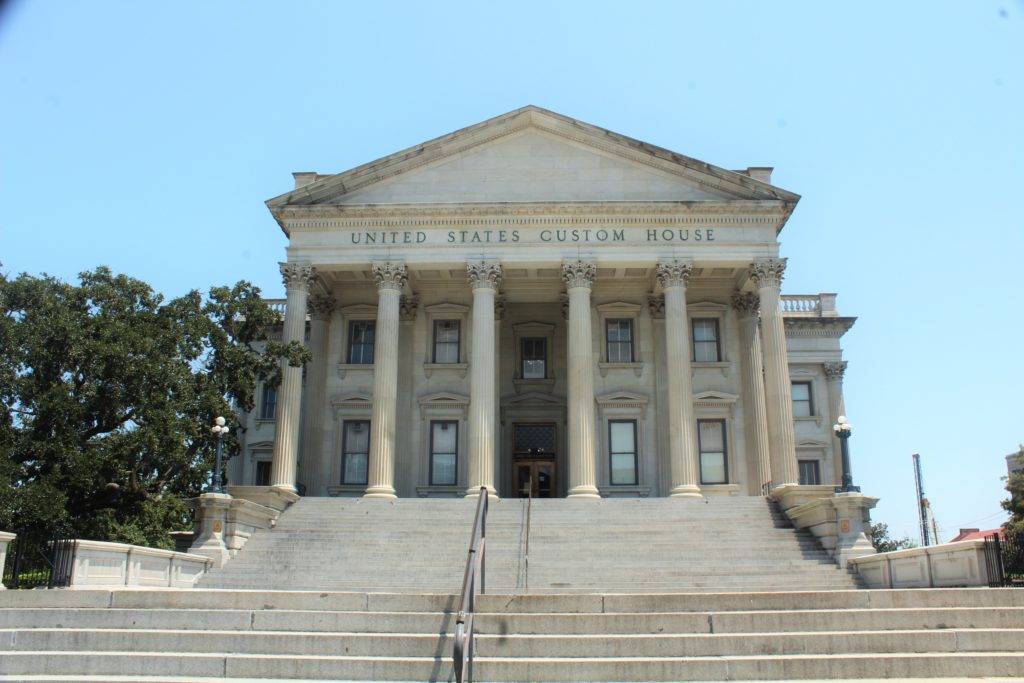
If you’re into impressive and imposing architecture, be sure to stop and admire the U.S. Custom House! This stunning white building was designed in 1853 with a combination of Roman, Greek, and Corinthian elements. It is largely reminiscent of a Grecian temple rather than French architecture, but it is truly a beautiful sight for the tour!
Directions: Turn to your left, and cross E. Bay Street to the Charleston City Market.
Historic Charleston City Market
188 Meeting Street
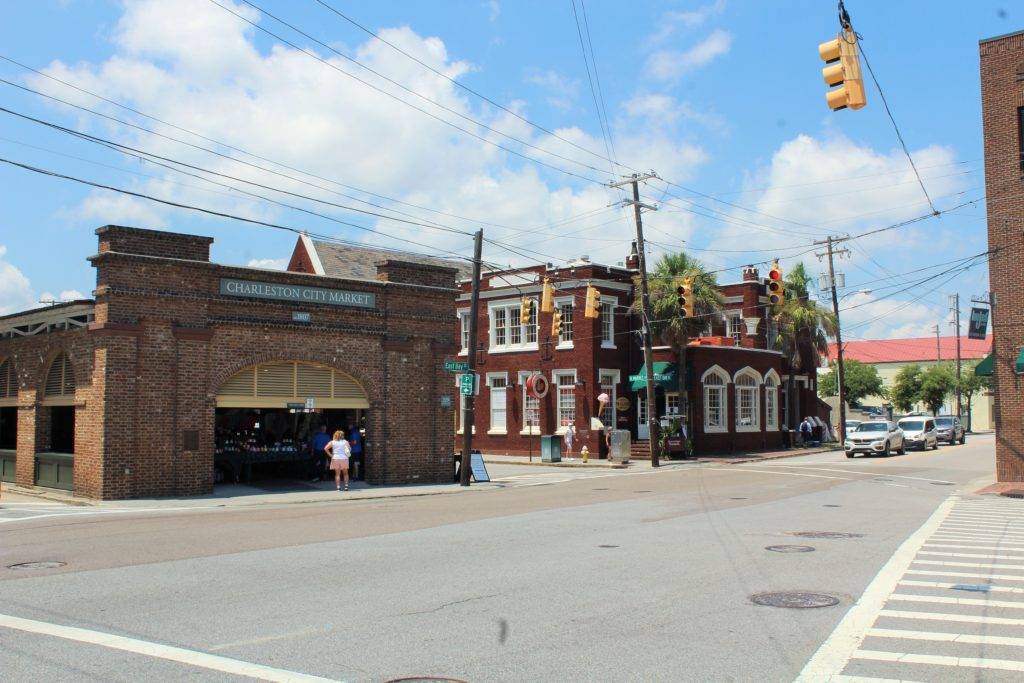
The Charleston City Market is a fantastic testament to the French Quarter’s rich history. The market is four blocks long–loooong blocks–and it’s over 200 years old! I could easily imagine it bustling with shoppers and merchants in the 1800s, as it’s all open-air and brick.
You will still find a fantastic variety of wares here, from sweetgrass baskets to handmade jewelry. I loved the photography and paintings from local artists as well!
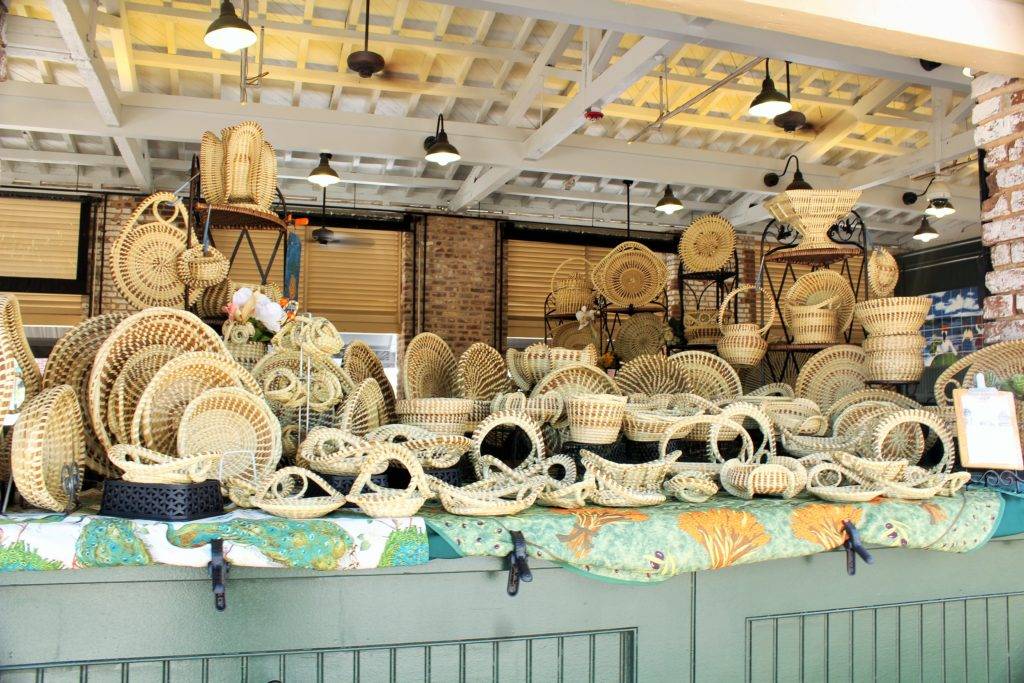
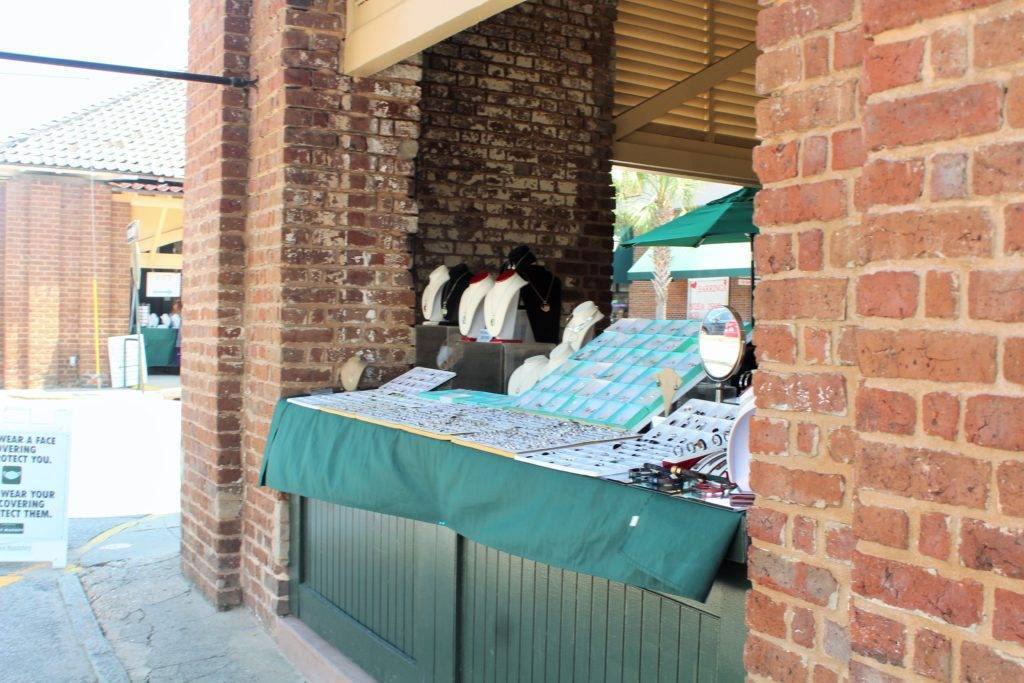
Daily hours are 9:30 am-5 pm (at least during COVID), so you have plenty of time to explore everything the market has to offer!
P.S. Keep an eye out for carriage rides along this street!
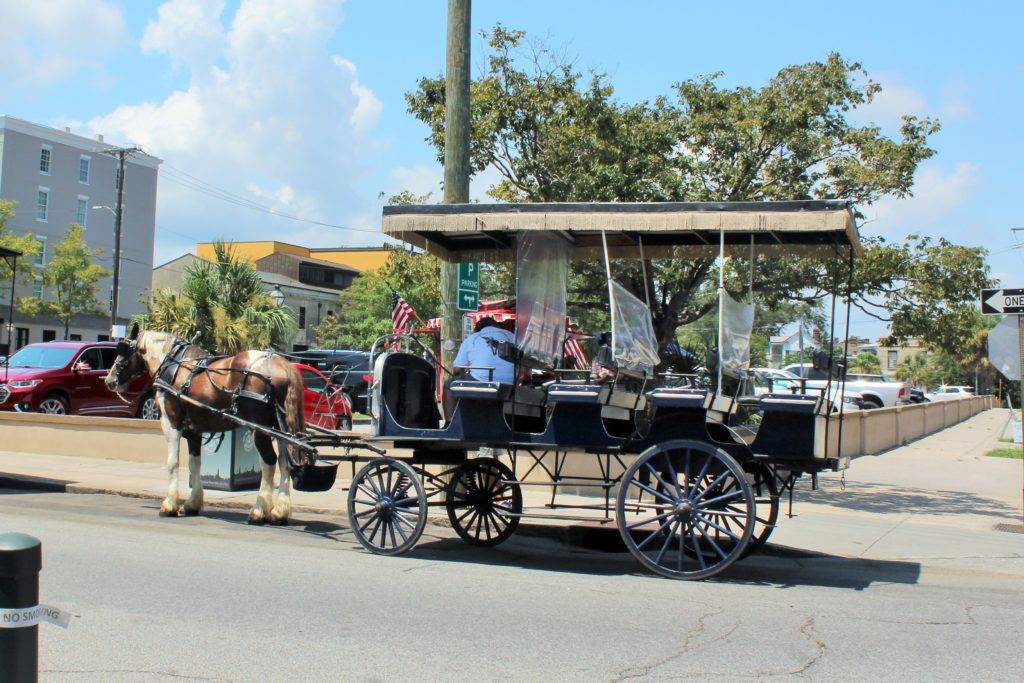
Directions: From the west end of the market, head south down Meeting Street. The Circular Congregational Church is near the south corner of Meeting Street and Cumberland Street.
Circular Congregational Church
150 Meeting Street
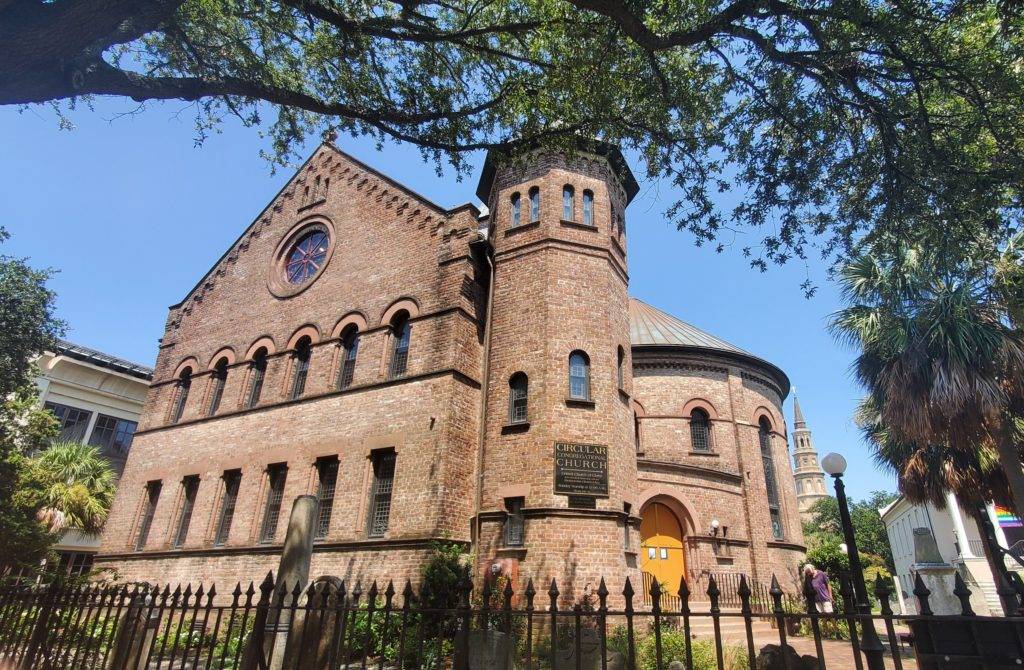
This beautiful church features a unique, round sanctuary, complete with lovely stained glass windows! The congregation here actually dates back to some of the original protestant settlers in 1681! The building you’ll see here, however, was completed in 1892 after the original burnt down. The graveyard, however, is original and dates back to 1695!
The church does not offer tours, but all are invited to attend their Sunday morning worship services, and it’s open as an event venue as well.
Directions: Head east on Cumberland Street. The Powder Magazine will be on your right.
Powder Magazine
79 Cumberland Street
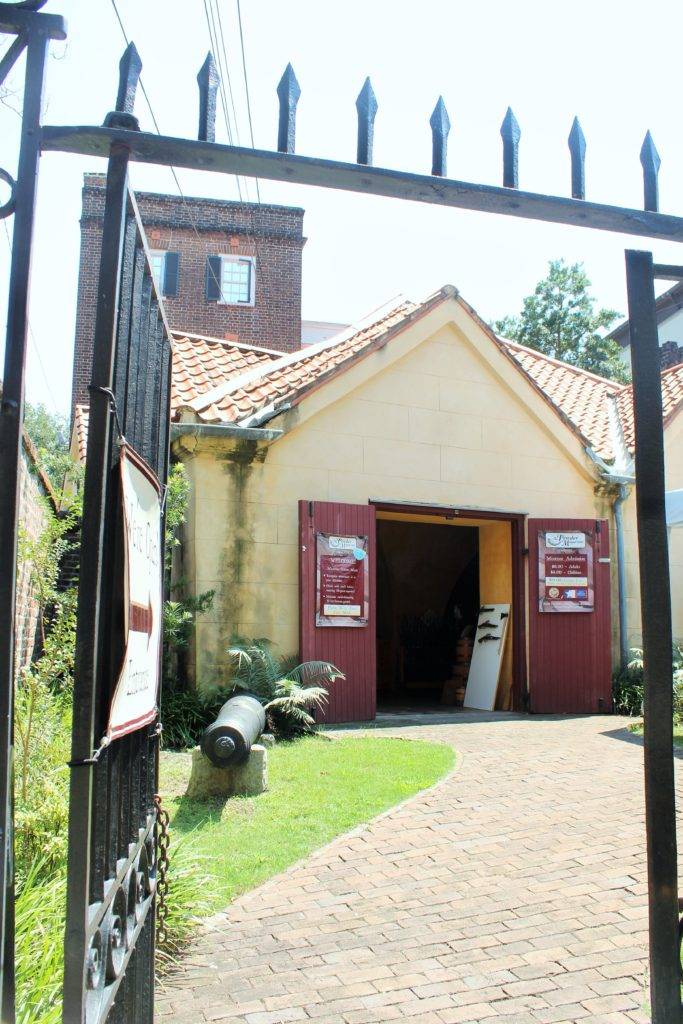
The Powder Magazine is Charleston’s (and South Carolina’s) oldest government building and the last standing portion of Charleston’s original city fortifications! Pretty cool, right? It was built in 1713 and has actually served as quite a few different things through the years after its days as an active Powder Magazine ended in 1780.
It’s now open as a museum to learn about colonial military history. Hours are 10 am-4 pm on Monday-Saturday, and 1 pm-4 pm on Sunday. Tickets are $6 per adult.
Directions: At the end of the block, turn right (south) down Church Street.
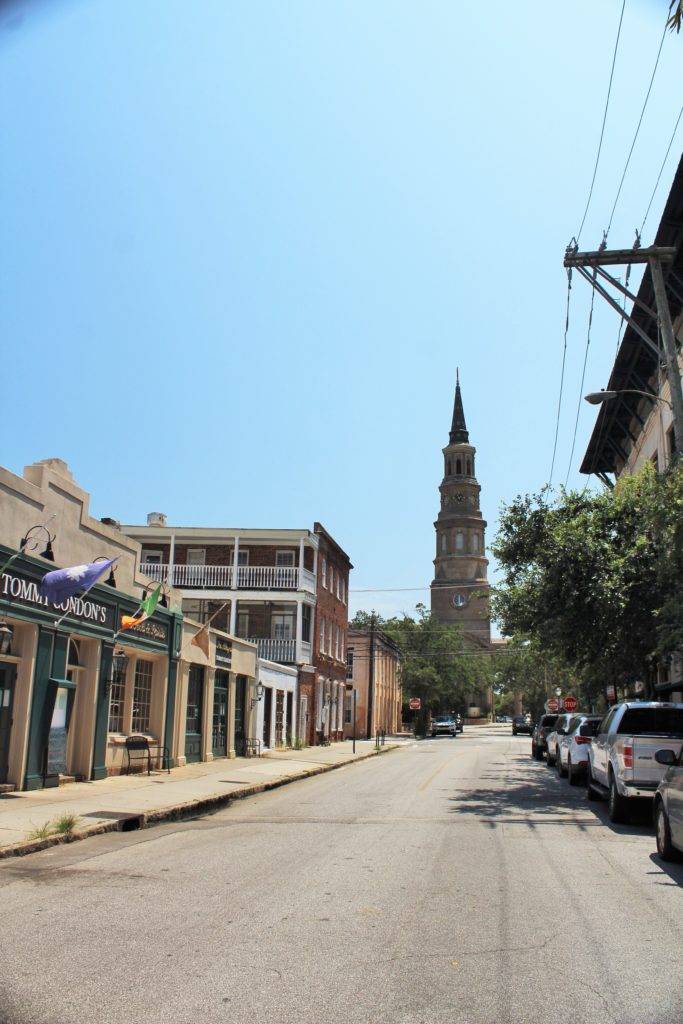
St. Philip’s Episcopal Church
142 Church Street
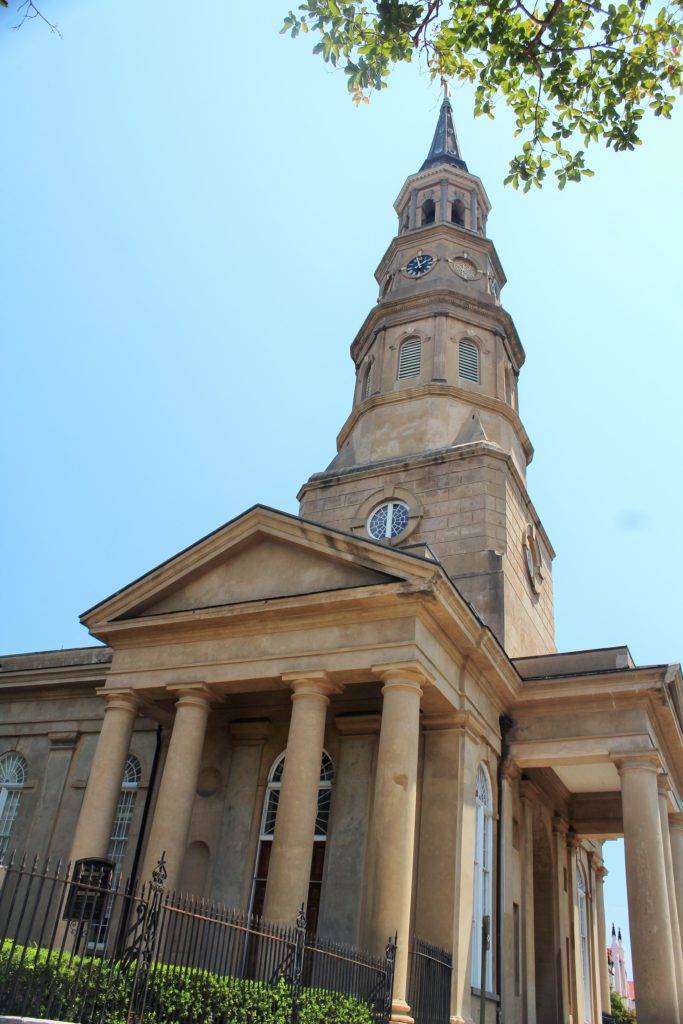
The St. Philip’s Church is the home of South Carolina’s oldest congregation! (I guess the Anglicans beat the Protestants by a matter of weeks). It’s a very beautiful structure built in 1838 with Roman and Tuscan elements.
It also has a clock that chimes on the hour (we just barely missed recording it for you).
Walking down Church Street, you’ll also pass St. Philip’s two cemeteries. If they’re open, be sure to duck inside: there are some very old grave markers, and the church has created a pleasant atmosphere to wander among them.
Directions: Continue heading south on Church Street. The French Huguenot Church is directly across the street from St. Philip’s.
French Huguenot Church
136 Church Street
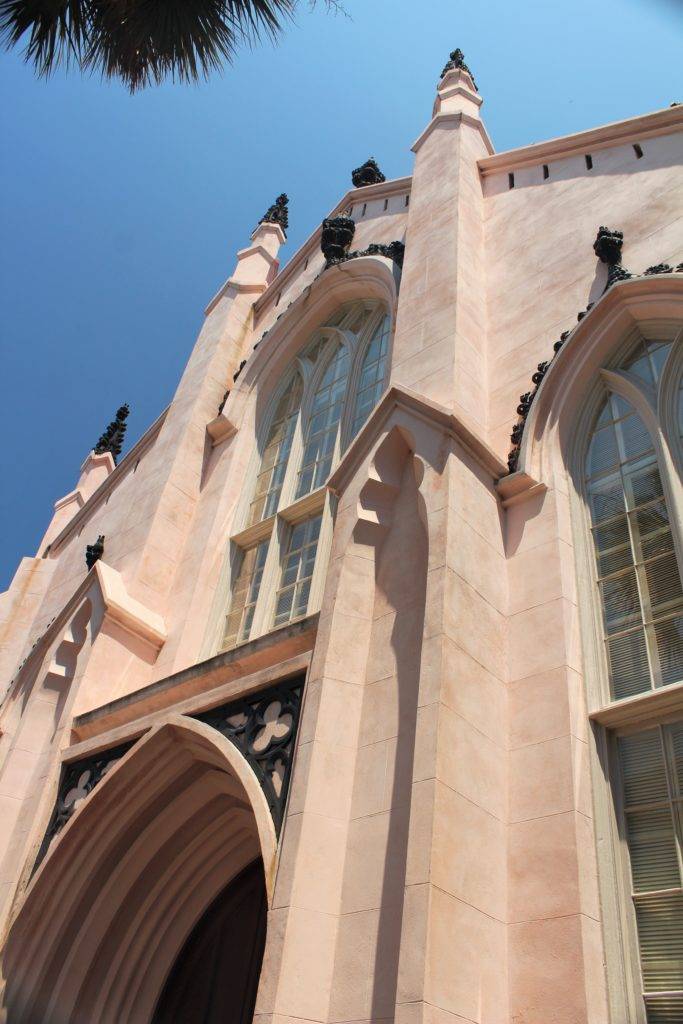
The French Huguenot Church also has a pretty unique history. This is one of the few elements that is connected all the way to the first French citizens of Charleston.
This particular building dates back to 1845, but the congregation started back in 1687! The church has been rebuilt twice: once after a large city fire and once after it was damaged by both a large earthquake and the Civil War.
The church’s congregation hasn’t always been active, but there has been a revival of members in recent years, and it is currently the only French Calvinist congregation in the United States! Fun fact: they hold services in French once a year!
Directions: Continue south on Church Street and look across the street to see the Dock Street Theatre.
The Dock Street Theatre
135 Church Street
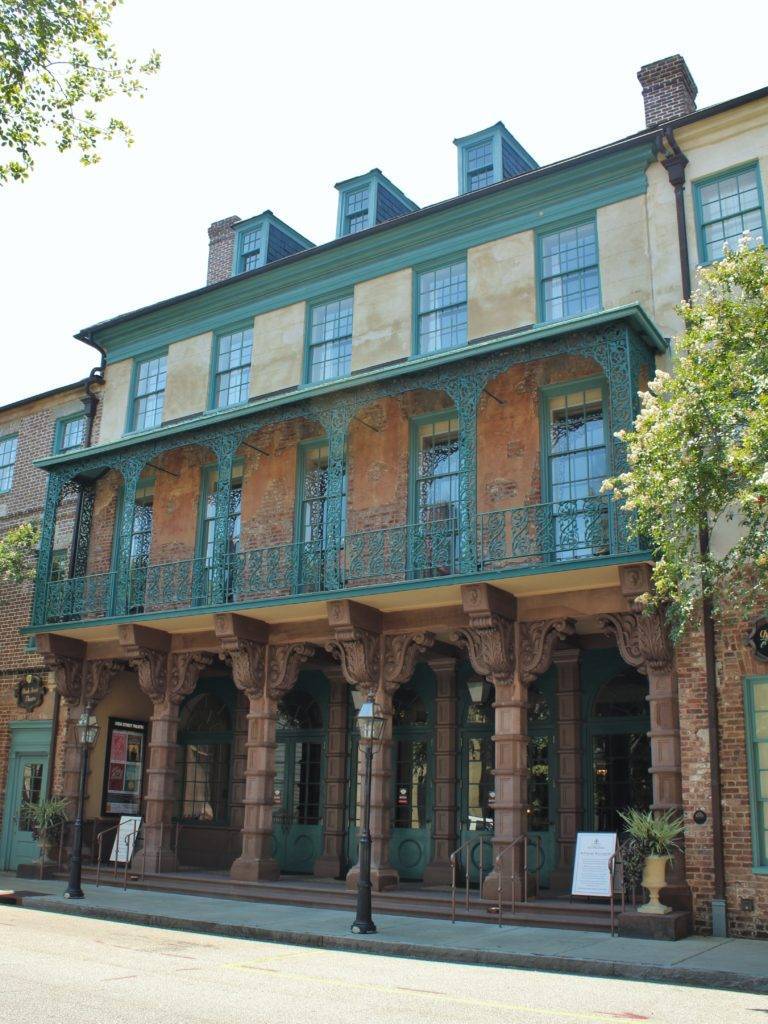
The Dock Street Theatre is a Charleston tradition dating back to 1736! As such, it was America’s first theatre! Sadly, the original building is no longer here for us to enjoy.
This current building in the French Quarter was built in 1809 as the Planter’s Hotel, which eventually fell into disrepair around the time of the Civil War. In 1935, the city bought the hotel and refurbished many of its ornate elements to fit the construction of a new Dock Street Theatre in the building, which opened in 1937.
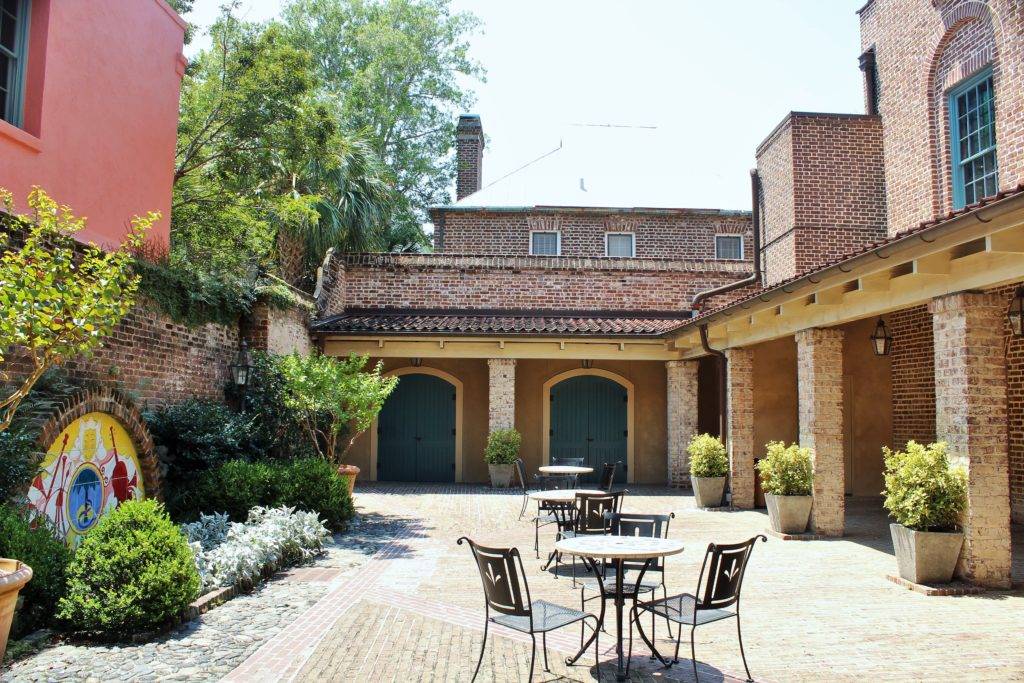

After another $19 million renovation in 2010, the theatre now has all the comforts and technology of the 21st century installed for its many drama, comedy, and musical showings.
Tickets generally range around $30 per person. If you have time during your trip, be sure to catch a show!
Directions: Head back to Queen Street and turn left (west). Head about halfway down the street and keep an eye out on your right for the Thomas Elfe House by the Healing Gallery.
Thomas Elfe House
54 Queen Street

Thomas Elfe was a famous and very talented woodworker in the 18th century. His residence in the French Quarter is the oldest restored historical residence in Charleston!
It used to be open for tours, but it is currently closed to visitors at this time.
Directions: Continue west on Queen Street, then turn left at the intersection of Queen Street and Meeting Street. Washington Square will be one and a half blocks ahead on your left.
On the way, keep an eye out for some visually impressive buildings, including the Mills House Wyndham Grand and Hibernian Hall.
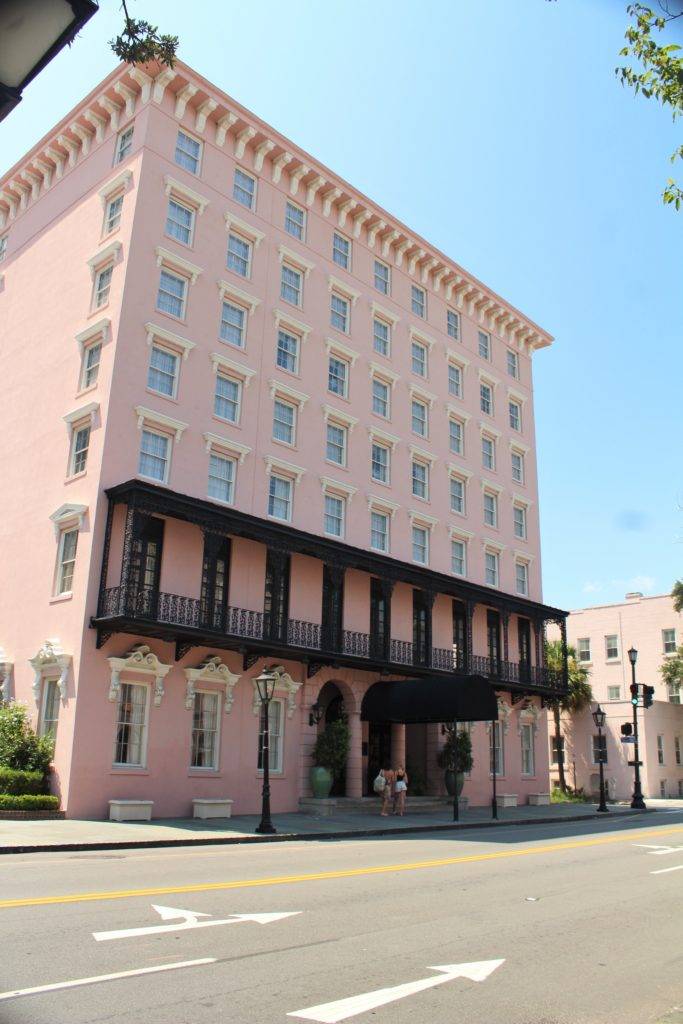
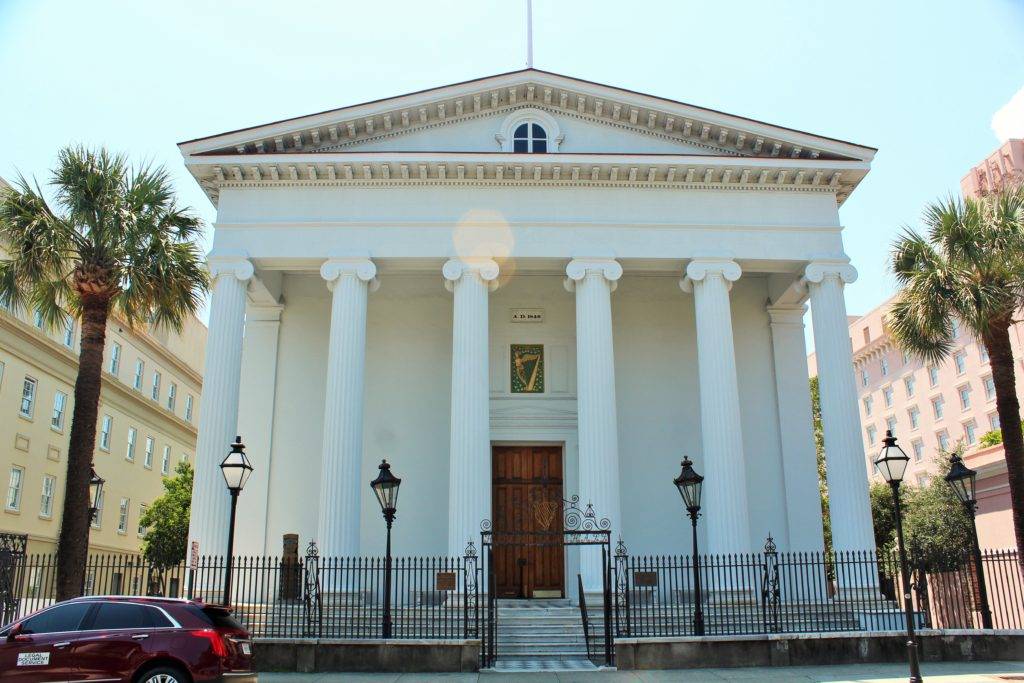
Washington Square
80 Broad Street

If you’re ready to take a little break from walking around the French Quarter, be sure to stop and enjoy Washington Square. This pretty park features plenty of shade and benches around a 42-foot model of the Washington Monument.
It’s not French, but we enjoyed its peace and quiet for a few minutes.
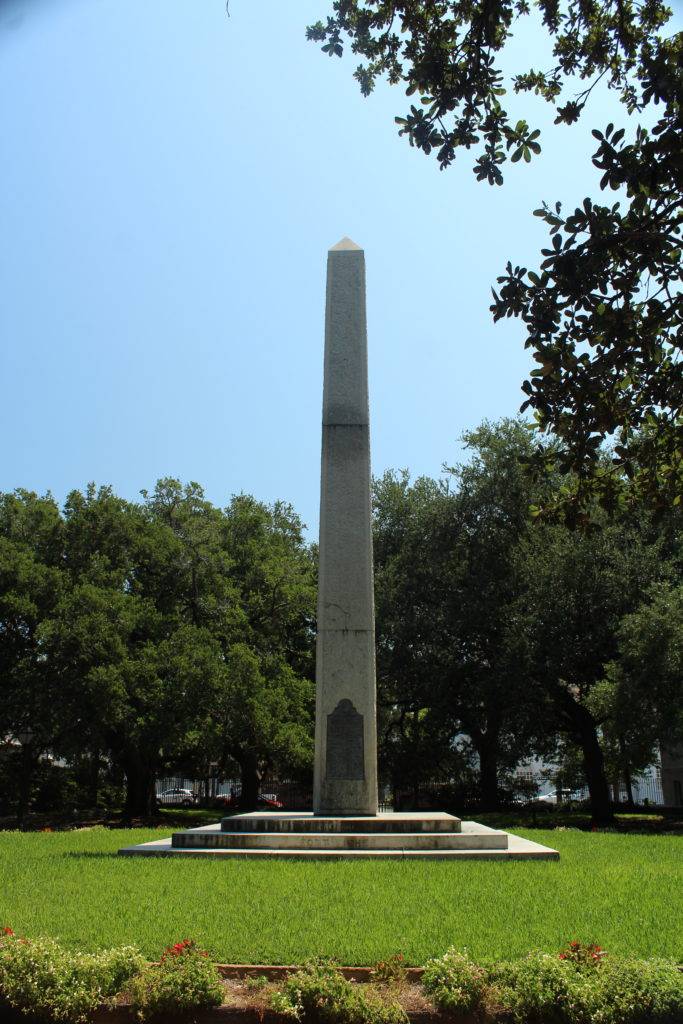
Directions: Exit the park and continue to the corner of Meeting Street and Broad Street. The Charleston City Hall is on the corner.
Charleston City Hall
80 Broad Street
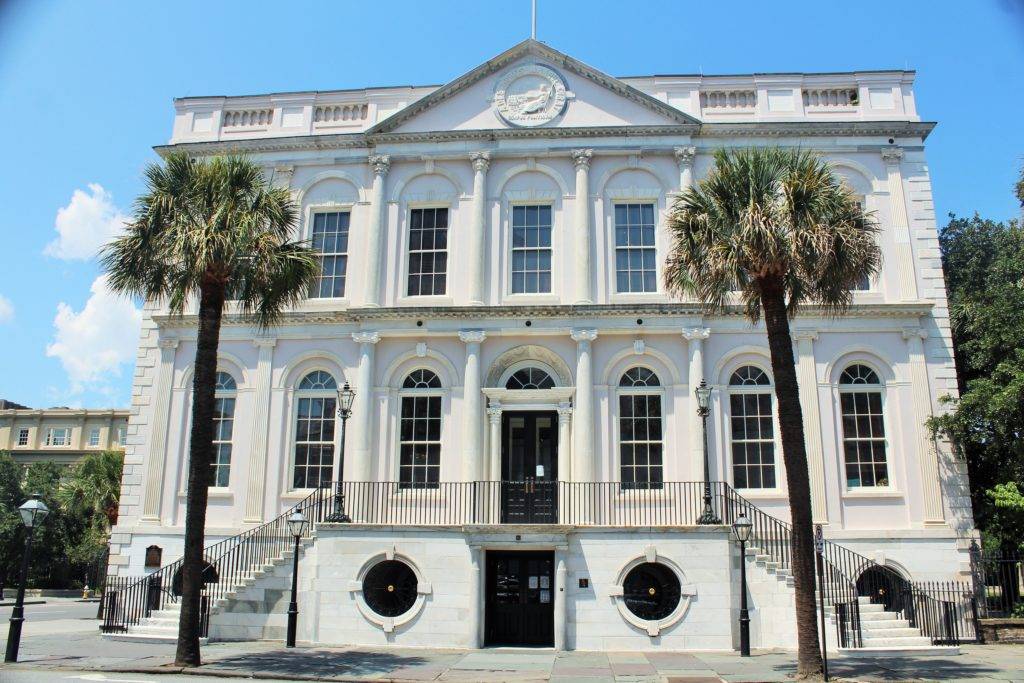
The Charleston City Hall is one building in the French Corner you definitely don’t want to miss!
This elegant building was originally intended to be an impressive bank, and even by today’s standards, it’s eye-catching. According to the National Park Service, the building was designed by Gabriel Manigault, who used an Adamesque style.
Today’s City Hall features a white stucco exterior with white marble trim. However, the original building was made with red brick, which provided a bold contrast to the marble. I particularly loved the sweeping double staircases and the round windows that run all around the bottom level of the building.
Directions: Head east on Broad Street and look all around!
Gallery Row
Broad Street
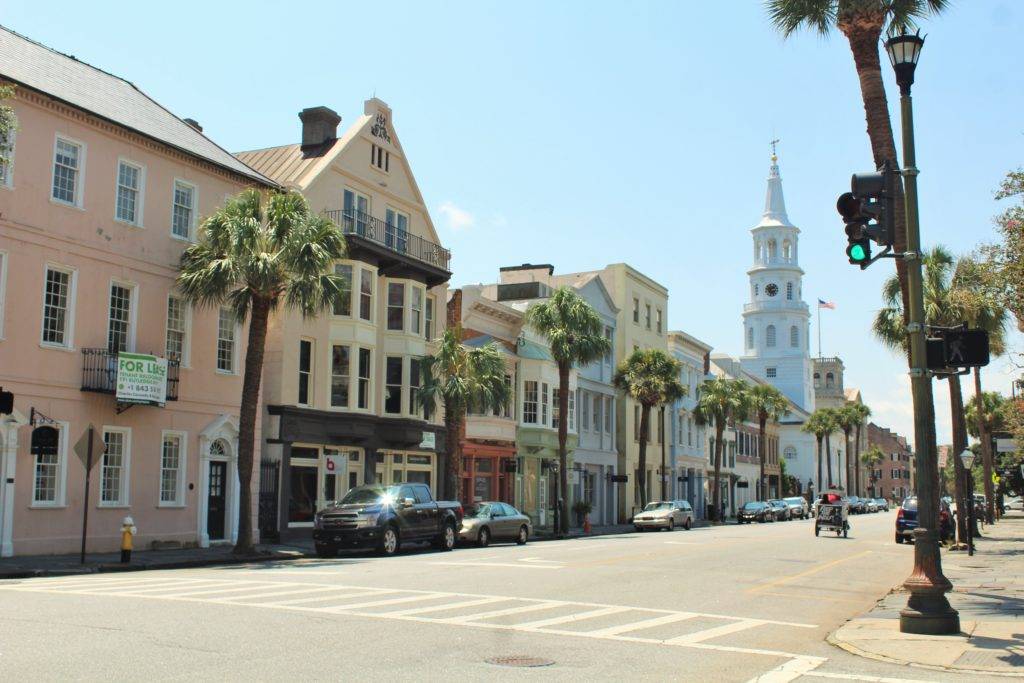
On of the most iconic streets in the French Quarter, Broad Street is also known as Gallery Row due to the numerous art galleries positioned on this street. If you have the time, be sure to stop and peruse some of the 16 galleries and all their different styles.
Along the way, keep an eye out for the many gorgeous buildings along this road. Many of these date back to the 1700s and have been wonderfully preserved and painted in fun colors. You’ll pass several historically significant homes and buildings, including the Confederate Home and College, Saint Michael’s Church, and Governor John Rutledge’s House.
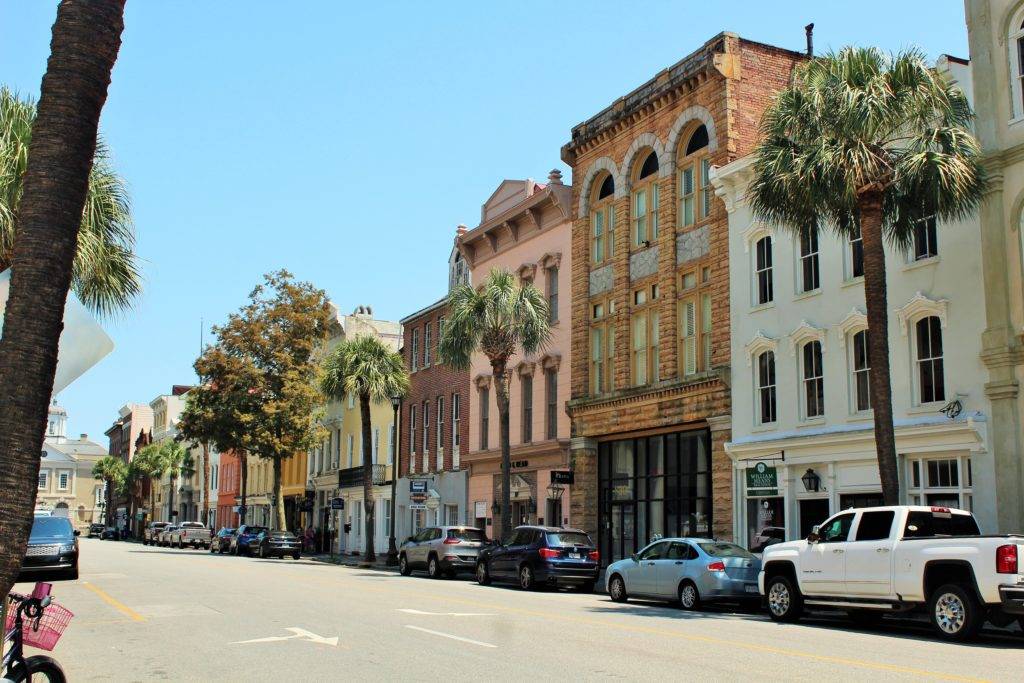
Directions: If you’ve reached the imposing Old Exchange and Provost Dungeon, you’ve gone too far. Head back to Church Street and go north toward the French Huguenot Church, then take a right on Chalmer’s Street. Look for the cobblestone street! 🙂
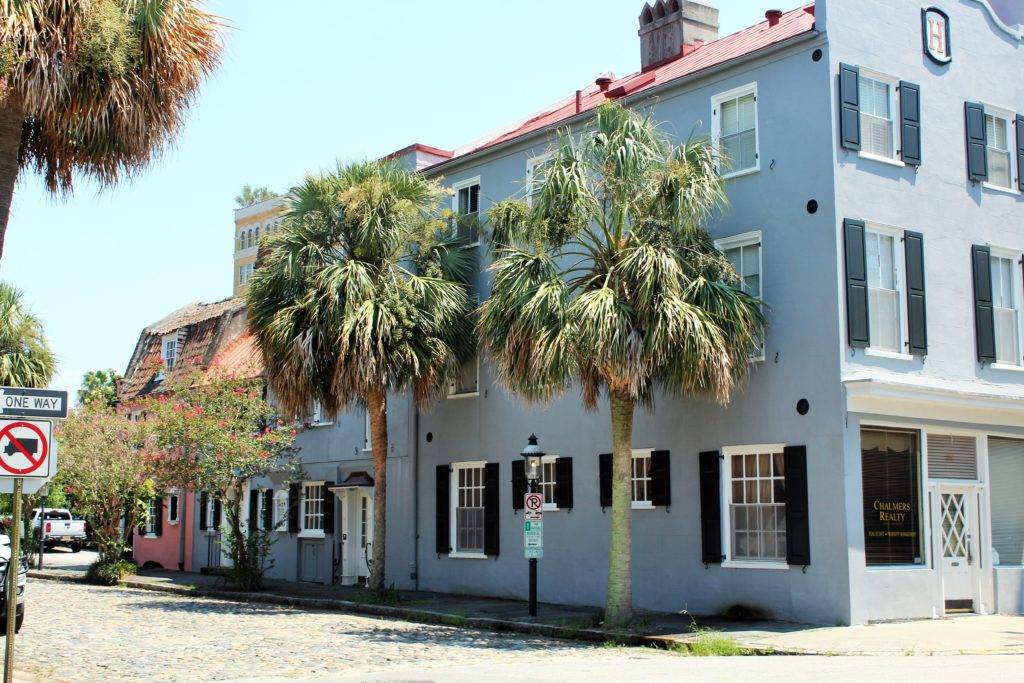
The Pink House
17 Chalmers Street
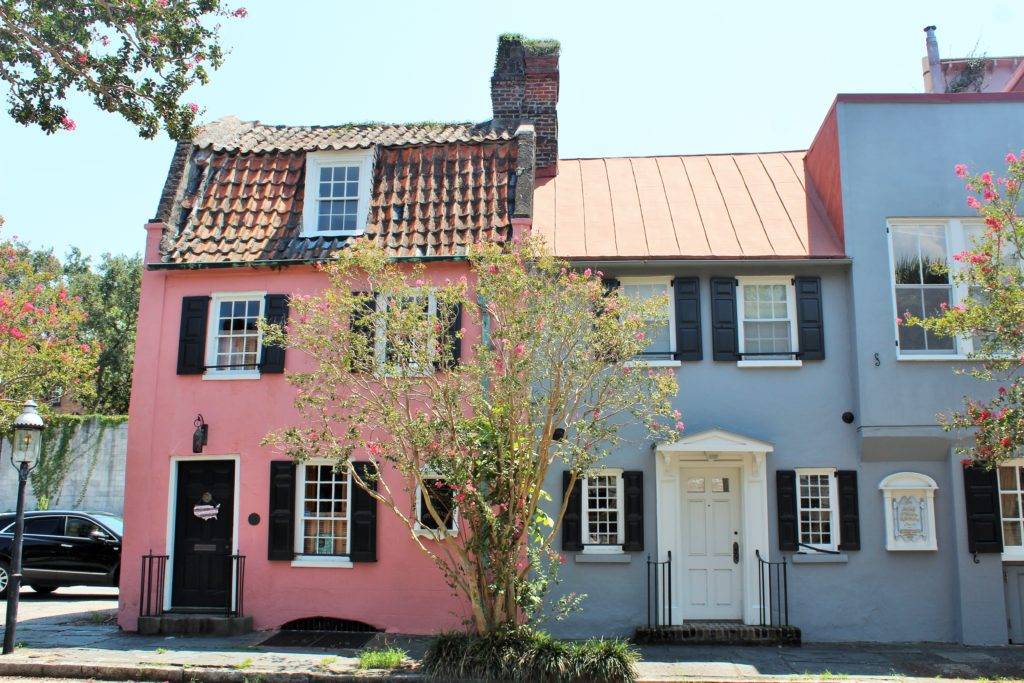
The Pink House is one of Charleston’s oldest buildings and is quite popularly known as the smallest house in Charleston! This adorable one-bedroom home was built by John Brenton somewhere between the late 1600s and 1712.
Be sure to check out the link above for a full history of the house and plenty of fun facts. Here’s one: the house was built with a pink coral stone from West India, which earned it the name “The Pink House.”
Okay, okay, here’s two: over the past 300 years, this little house “has survived over thirty hurricanes, two major earthquakes, two wars, snowstorms, and multiple catastrophic fires.” Whoa!
Directions: Continue east on Chalmer’s and look to your left for the Old Slave Mart Museum.
Old Slave Mart Museum
6 Chalmers Street
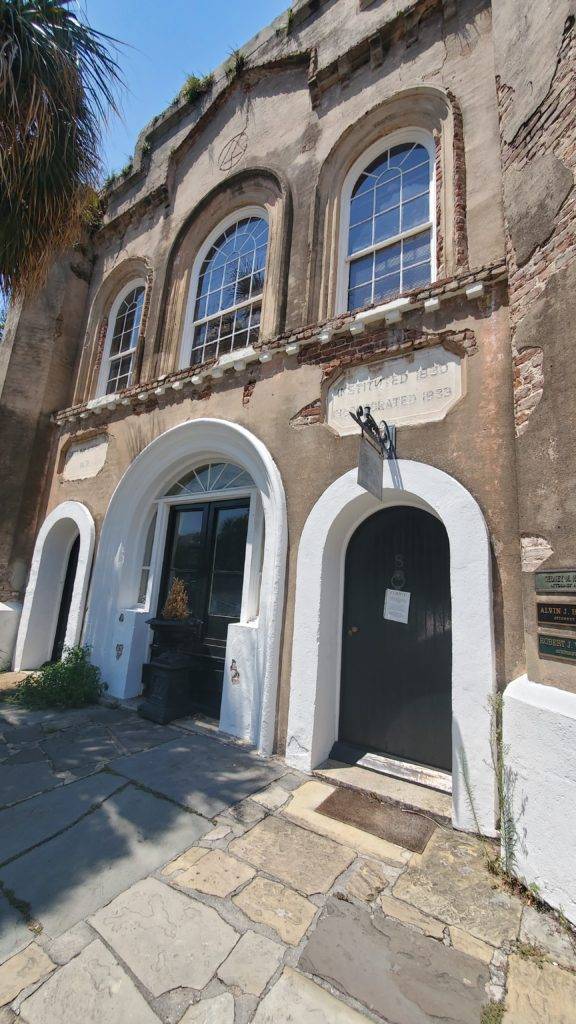
This building is one of the most historically significant buildings in the French Quarter and possibly all of Charleston. The Old Slave Mart Museum is the first African-American Slave Museum and the last surviving slave auction house in South Carolina.
Here, thousands of slaves were cruelly sold off on Charleston’s booming slave market; according to the museum’s website, as many as 35-40% of all slaves were brought into America through Charleston.
So while this is not a happy stop by any means, it is an important one. If the museum is open during your visit, be sure to stop in and read all the informational material. It is highly educational, and all the staff members can trace their families back to slaves, so they have a real investment in preserving this history.
I’m a big believer in learning about our past to prevent us from making similar mistakes and problems in the future. This building and its history is a terrible part of America’s past, but I think it’s essential that it’s remembered.
Directions: At the east end of Chalmer’s Street, a small alley leads to E Bay Street. Head to E Bay Street and turn right; the Farmer’s Exchange Building will be almost immediately on your right.
Farmers and Exchange Bank
141 East Bay Street
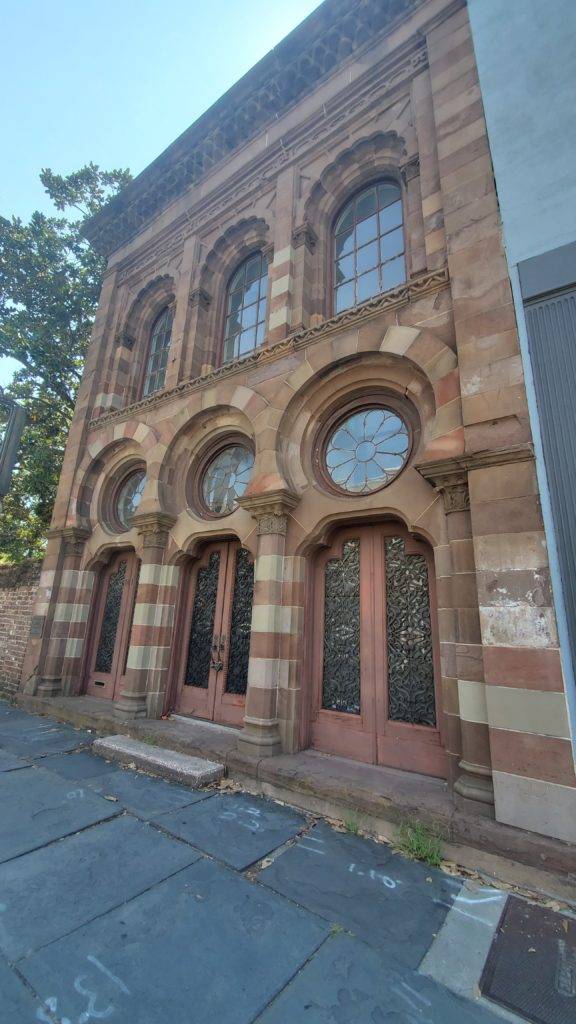
The Farmers and Exchange Bank was one of my favorite buildings on this tour, and I desperately wanted to go inside. Sadly, a man passing by told us that it’s been deserted for about a decade.
Just look at this gorgeous architecture!
The building is a National Historic Landmark, so at least it’s being preserved. According to the NPS website, it’s built in Moorish Revival style, and the interior features a stunning, skylighted room with Spanish motifs. They have a beautiful picture from the 1930s you can check out on their page.
Directions: Cross the street and turn right (south) to continue down E. Bay Street. The Old Exchange and Provost Building will be on your left at the three-way intersection.
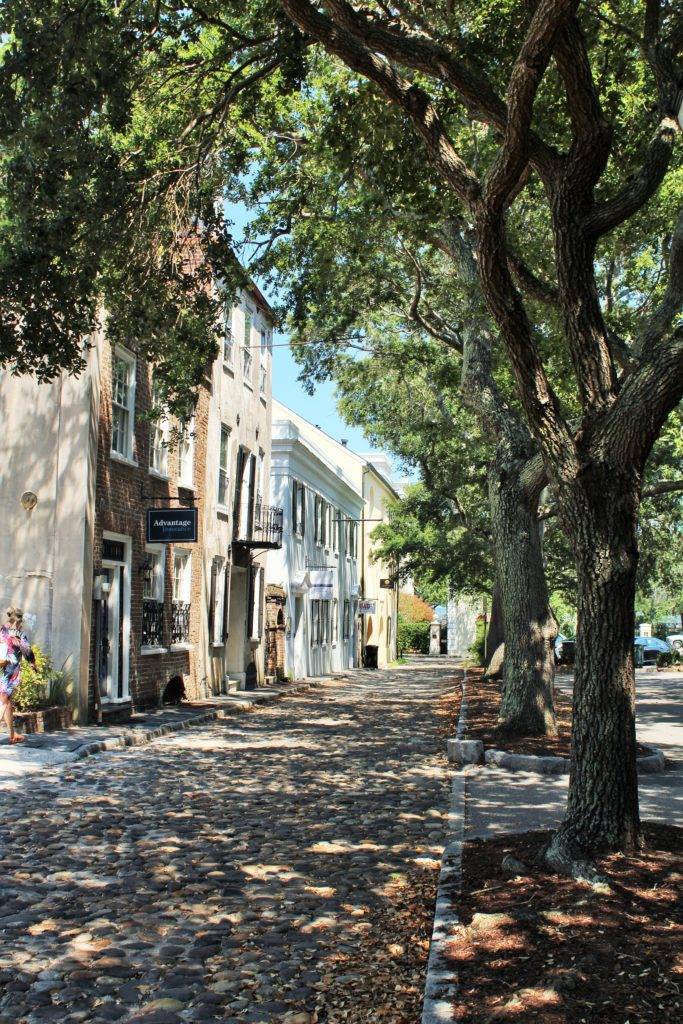
Old Exchange and Provost Dungeon
122 East Bay Street
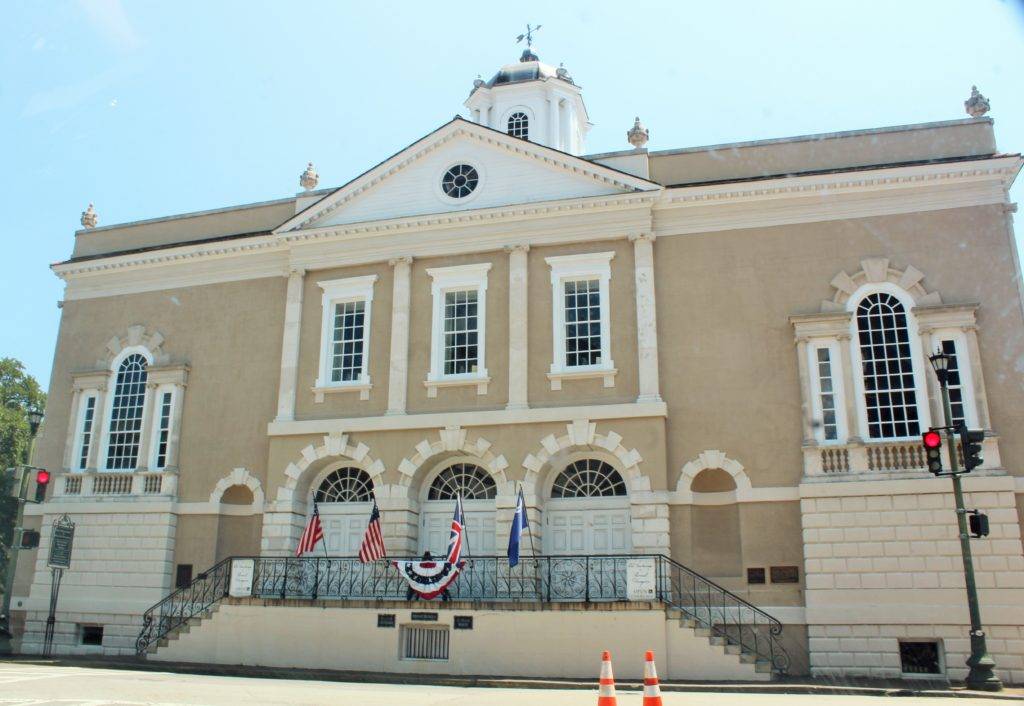
The Old Exchange and Provost Dungeon is highly significant to the events of the Revolutionary War.
Completed in 1771, the building was used as a customs house, post office, military headquarters, and more. During the American Revolution, British soldiers turned the bottom level into a dungeon that housed many prisoners during the war. It was also one of the prominent Charleston locations used as a slave auction before the Civil War.
On a happier note, this is also where the South Carolina patriots approved the U.S. Constitution in 1788 and where a lavish ball was held for President George Washington in 1791.
If you tour the building, you’ll learn a lot of important and interesting history and even be able to see part of the original Charles Town city wall.
The museum is open daily from 9 am to 5 pm, with tours going every 30 minutes. Entrance is $10 per adult.
Directions: Take a left down Exchange Street and follow it all the way to the harbor. You’ll find yourself back at the Joe Wiley Waterfront park!
Closing Thoughts on Charleston’s French Quarter
I hope you enjoyed taking this tour with me through the gorgeous streets of Charleston’s French Quarter! I would go back in a heartbeat, and I’m sure you will love seeing all the beautiful buildings.
If you have any questions or comments, please let me know! Especially if you take this tour, I’d love to hear how it went for you.
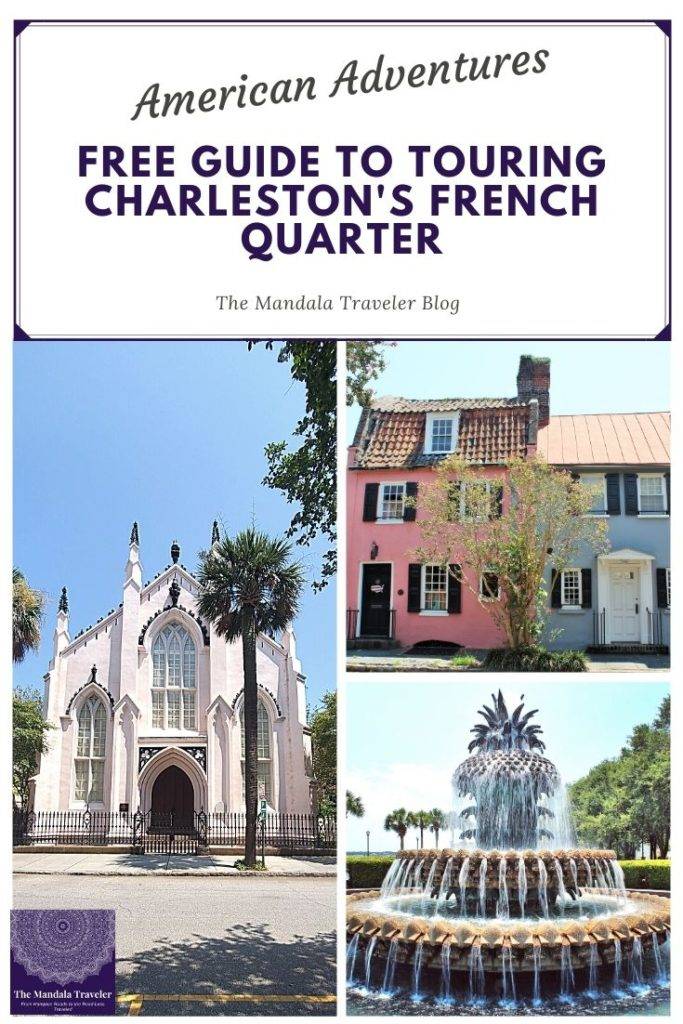
Be sure to download the guide PDF for easy access and reference during your tour. And don’t forget to pin or save this post so you can easily find it when the time comes!
If you haven’t signed up for the blog yet, you can do that below to get a weekly reminder email about new posts and a free PDF for touring Paris!
Sign Up for Updates from Carried Away Travels
Until next time–happy travels!
Ready for More? Check Out These Recent Posts!
- Discover the Magic of Virginia’s Luray Caverns!

- Everything You Need To Pack For A Week In Iceland

- How to Spend 3 Days in Dublin & Northern Ireland

- 11 Essential Things to Know Before Visiting Iceland

- My Top 12 Travel Tools For Saving Time & Money

- Dublin Exploration Hack: Big Bus Tours

Make Vacation Planning Easier
Download my Vacation Planner or Travel Blogger’s Planner today!
